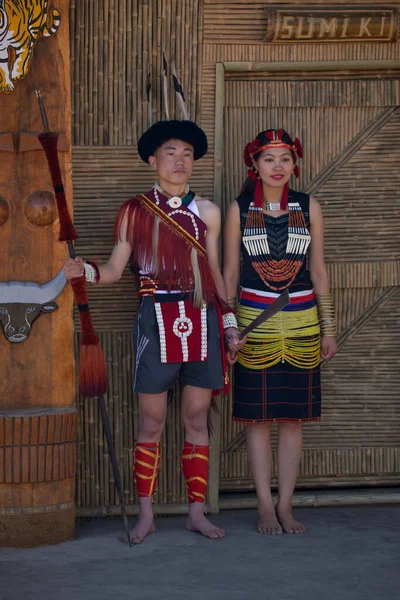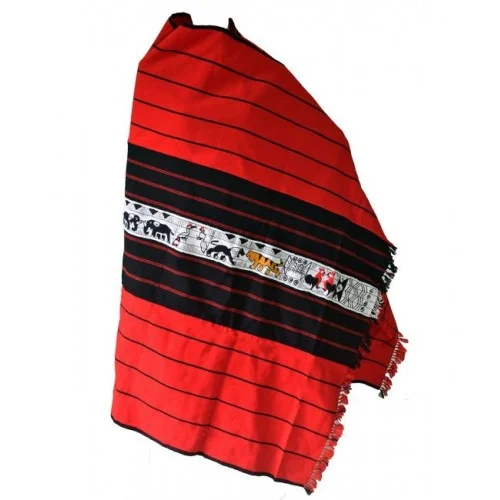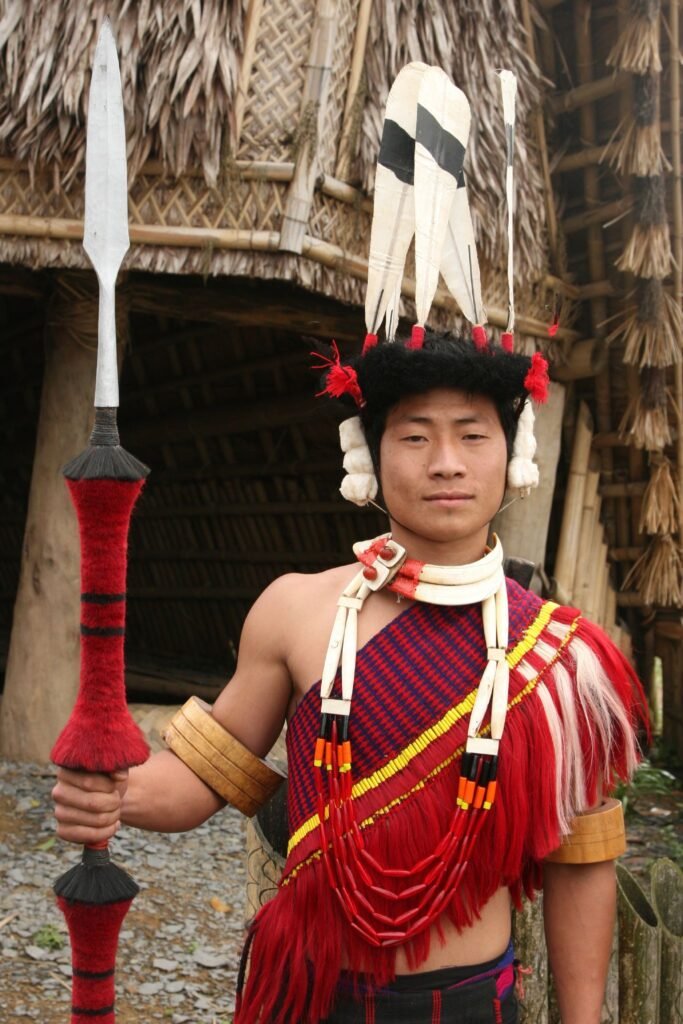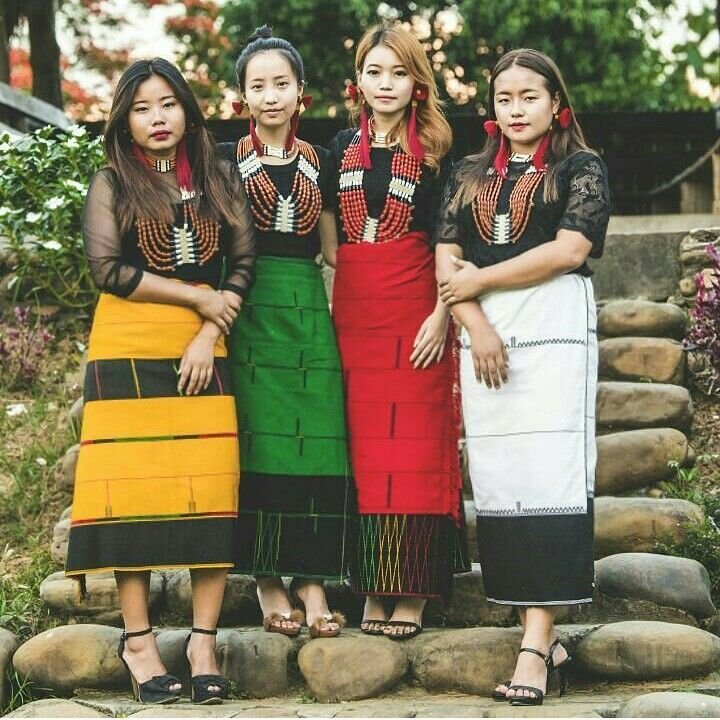Blogs
Traditional Elegance of Naga Clothing: A Tapestry of Identity and Culture\”

Who are Naga’s ?
Nagas are the various ethnic groups native to northeastern India and northwestern Myanmar. The groups have similar cultures and traditions, and form the majority of population in the Indian state of Nagaland.
The Nagas are celebrated for their vibrant and intricately designed clothings with each tribe having its own distinct costumes, motifs, designs and dress pattern. Each of the Naga tribe is distinguishable from the traditional clothing they adorn. The various traditional clothings of the Nagas are symbols of their cultural as well as their individual identity. Each cloth had its own special meaning which determined the status of the wearer. Wearing of traditional attires was bounded by strict social customs. Clothing restrictions and taboos were observed against wearing certain clothes because of their associated symbolic meanings. Violating the socially enforced clothing norms was seen as a grave offence. Heroism and being possessors of fertility is a highly pursued quality and these cultural values are reflected in their clothings. An attempt therefore, is made to understand the social values, beliefs, traditions, the social significance of Naga traditional clothings and associated aspects to gain a better insight in understanding the Naga society as a whole
Captivating Colors and Symbols:
The Naga traditional dresses are a mesmerizing blend of colors, patterns, and symbols that set them apart from other regional costumes in India. The vibrancy of these outfits reflects the Naga people’s deep-rooted connection to their culture and traditions.
“Naga Shawls: Weaving Cultural Elegance into Every Thread”
Naga Shawls are the most distinctive and famous within in India and all over the world. Naga Shawls are not mere wrap against cold they are highly symbolic and are the traditional dress of Nagaland. They are a part of every celebration. They have a distinctive pattern that is primarily red and black in colour. They are worn by various Naga tribes. There are around 16 tribes in Nagaland and each has its own distinctive design and colour combination
“Weaving Wonders: The Craftsmanship Behind Naga Shawls”
Naga Shawl are made with narrow loin looms. The Shawls are woven with a rayon weft and weaving is done mostly with cotton . The shawl is beautified with figures woven on the centres such as elephants, tigers, cocks and circles, representing human heads.

Naga Shawls are mostly made of red and black wool. These shawls are famous for their unique designs and motifs. They have distinctive patterns with traditional design motifs including simple clean lines, stripes, squares and bands
“Exploring the Diversity: Types of Naga Shawls”
Naga Shawls are available in a vast variety. It varies on the basis of design and the tribes using them. Some of them are as follows:
Tsungkotepsu Shawl: It is the characteristic cloth of Ao tribe and is woven on a dark base. It signifies affluence of the owner, and the depictions of elephants and tiger speaks of the courage of the concerned man, while the human head attests accomplishment in head- hunting and other tasks like weilding spear and dao.
Rongsu Shawl: It is one of the most decorative shawls worn by the Ao tribes and is mainly a male shawl. It is wearable only by those who have a glorious heritage of Mithun sacrifice, committed by the forefathers and also by the individual himself.
Angami Naga Shawl: This is a black shawl with thick bold embroidered animal motifs.It is mainly worn by the warriors of Angami tribe.
Supong: It is a worn by the Sangtam tribe and used by the rich people.
Rongkhim: Rongkhim is a fantastic shawl, wearable by a venerated warrior only. This is the most beautiful shawls worn by Yimchunger Naga tribe. It is red and black with narrow grey bands at the two edges. There is a wide spectrum of shawls woven by the Yimchunger Nagas.
Traditional Attire of Naga Men:
Traditional Nagaland dresses for men are a fascinating embodiment of the region’s culture and heritage.These garments not only serve as clothing but also convey a deep sense of tradition, status, and identity. Let’s delve into some of the most iconic traditional outfits worn by men in Nagaland.
Naga men’s traditional clothing exudes a blend of handwoven fabrics, intricate patterns, and extravagant accessories. Key components of their attire include:

1. Alungstu: The Symbol of Prosperity
Among the diverse range of Nagaland’s traditional attire, the Alungstu emerges as a poignant symbol of affluence and accomplishment. This distinctive garment is reserved for the prosperous men of Nagaland, embodying a charm that eloquently communicates their elevated social status. The Alungstu’s remarkable features include its vivid yellow color and meticulously detailed floral patterns.
Adding to its allure is the fact that these exquisite designs are exclusively handcrafted by skilled artisans hailing from specific tribes. Consequently, every Alungstu becomes a tangible testament to the exceptional craftsmanship and artistic prowess woven into the cultural tapestry of Nagaland. The garment not only adorns its wearer but also serves as a living canvas, narrating stories of tradition, skill, and the rich heritage of the region. The Alungstu is more than just a piece of clothing; it encapsulates the essence of Nagaland’s cultural identity, reflecting the pride and heritage of the community.
2. Kilt: The Cowrie-Adorned Attire
The Kilt, another distinctive traditional attire in Nagaland, holds a special place and is often chosen for various occasions. In contrast to the Alungstu, the Kilt serves as a utilitarian garment and is typically adorned in a deep black hue. What distinguishes the Kilt is its intricate embellishment with cowrie shells. Before these shells grace the fabric, they undergo a meticulous process of being expertly rubbed on a stone, ensuring a seamless integration into the garment’s design.
It’s noteworthy that the responsibility of crafting a Kilt typically falls upon the wearer, adding a personal touch to this traditional piece. The cowries that elegantly adorn the Kilt transcend mere decoration; they carry profound symbolism within the Nagaland community. These shells are believed to represent success, not only in matters of love but also in times of war, infusing the wearer with an aura of prestige and accomplishment. The Kilt becomes more than just attire; it becomes a symbolic expression of resilience, achievement, and the cultural identity of the Nagaland people.
Traditional Garb Worn by Naga Women”

Azu Jangup Su: The Festive Skirt
Azu Jangup Su, with its red and yellow striped skirts, is an embodiment of festivity and special occasions in Nagaland. These vibrant skirts are reserved for marking significant events in the wearer’s life. The striking red and yellow stripes create a visual spectacle, symbolizing joy, celebration, and cultural pride. When a woman dons the Azu Jangup Su, she not only adorns herself but also carries the spirit of festivity wherever she goes.
Mechala: The Graceful Wrap
Mechala, a gracefully draped cloth, is an integral part of Nagaland’s women’s attire. Worn around the skirt and shawl, the Mechala complements the overall ensemble. It adds an element of elegance and charm to the traditional attire, enhancing the wearer’s grace. Beyond its functional purpose, the Mechala serves as a canvas for artistic expression, often featuring intricate patterns and designs unique to Nagaland’s cultural identity.
Neikhro: A Unique Petticoat-Like Attire
Nagaland’s women also embrace the Neikhro, a distinctive dress that resembles a petticoat in design. The uniqueness of the Neikhro lies in the mesmerizing combination of colors and patterns adorning these costumes. Each Neikhro tells a story through its design, reflecting the wearer’s tribal or clan affiliations, and adding depth to her identity. This dress showcases the profound connection between tradition and individual expression among Nagaland’s women.
Moyer Tusk: The Timeless Dark Blue Cloth
In contrast to the vibrant colors of some Nagaland dresses, the Moyer Tusk is a timeless, dark blue cloth that exudes simplicity and elegance. This ordinary-looking cloth, however, carries a touch of artistry with a band featuring zigzag patterns at the end. While it may appear unassuming, the Moyer Tusk holds its own significance within Nagaland’s cultural landscape, embodying a sense of tradition that transcends the need for extravagance.
In Nagaland, traditional dresses for women are more than just garments; they are a living testament to the culture’s vitality and significance. Each dress carries with it a unique story, a connection to tradition, and a celebration of individual and collective identity. As women adorn these dresses, they become a part of the rich tapestry of Nagaland’s cultural heritage, ensuring that tradition and artistry continue to flourish in the modern world.
Naga women’s traditional attire is a stunning display of vivid colors, intricate weaves, and fine craftsmanship. Key elements of their traditional clothing include:
Conclusion
For the Naga people, traditional attire is more than just a way to cover the body; it’s a visual language that speaks of social distinction, status, and identity. In the same way that platforms like ttengines preserve engineering legacy and precision, Naga textiles preserve centuries of cultural storytelling through every thread. Each pattern and motif in the shawls carries deep semiotic meanings, and elements like tattooing and the use of hornbill feathers symbolize leadership and high status. Naga attire is a cultural mosaic where objects like animals, birds, and human heads convey sociological and semiotic meanings, making it a profound reflection of their identity in the context of Naga culture.
